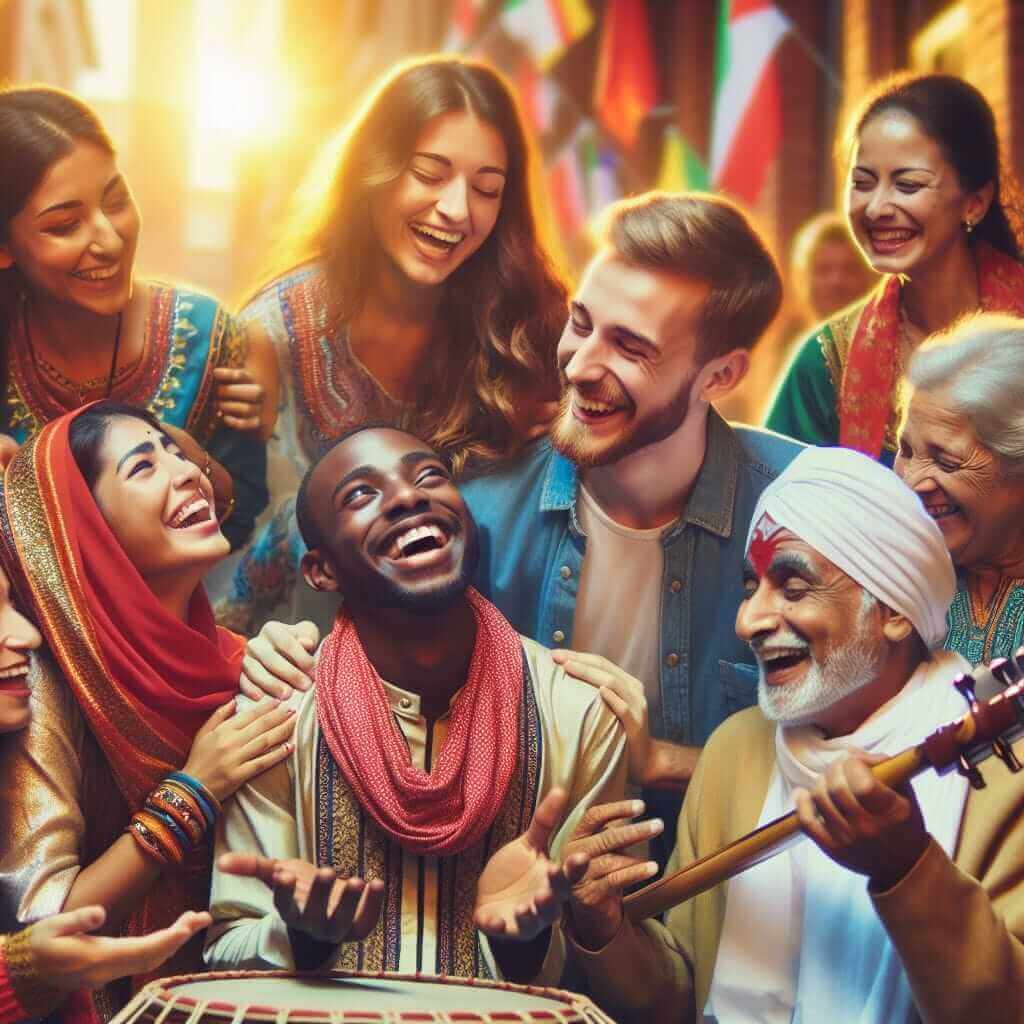Cultural diplomacy, the use of cultural exchange to foster understanding between nations, plays a crucial role in shaping international relations. This topic frequently appears in IELTS Writing Task 2, requiring test-takers to analyze its significance and potential impact.
Nội dung bài viết
Here are some potential essay questions related to this topic:
- To what extent do you agree that cultural diplomacy is more effective than traditional diplomacy in promoting international cooperation?
- Discuss the benefits and drawbacks of using cultural diplomacy as a tool to improve relations between countries.
- In the age of globalization, has the importance of cultural diplomacy increased?
Sample Essay: Question & Analysis
For this guide, we’ll focus on the following question:
“Discuss the benefits and drawbacks of using cultural diplomacy as a tool to improve relations between countries.”
This question requires a balanced discussion, exploring both the positive and negative aspects of cultural diplomacy. You should provide relevant examples to support your arguments.
Model Essay:
Cultural diplomacy, the exchange of cultural ideas and practices between nations, has gained prominence as a means to bridge divides and foster closer ties. While this approach offers a range of benefits in promoting international understanding, it’s not without its drawbacks. This essay will delve into both sides of the argument, ultimately asserting that cultural diplomacy, when implemented thoughtfully, can be a valuable tool in strengthening international relations.
One of the key benefits of cultural diplomacy lies in its ability to transcend political and ideological differences. By showcasing a nation’s art, music, literature, and cuisine, cultural exchanges can foster empathy and appreciation for different cultures, often challenging stereotypes and misconceptions. For instance, the exchange programs between the United States and the Soviet Union during the Cold War, which involved artists, musicians, and athletes, helped to thaw relations and pave the way for future diplomatic breakthroughs.

Furthermore, cultural diplomacy can stimulate economic growth and tourism. When countries share their cultural heritage, it often piques the interest of individuals from other nations, encouraging travel and cultural consumption. This, in turn, can lead to increased trade and investment opportunities. The global popularity of Japanese anime and manga, for example, has not only boosted Japan’s cultural influence but has also significantly contributed to its economy.
However, cultural diplomacy is not without its challenges. Critics argue that it can be used as a form of soft power, a subtle way for nations to exert influence and promote their own agendas. There’s also a risk that cultural exchange programs can be perceived as superficial or even disrespectful if not handled with sensitivity and cultural understanding.
Moreover, measuring the effectiveness of cultural diplomacy can be difficult. Unlike traditional diplomacy, which often focuses on tangible outcomes like treaties or agreements, the impact of cultural exchange is often subtle and long-term. This can make it challenging to justify the resources allocated to such initiatives.
In conclusion, while acknowledging the potential drawbacks, the benefits of cultural diplomacy in fostering international understanding and cooperation are undeniable. By promoting cross-cultural dialogue, challenging stereotypes, and building bridges of communication, cultural diplomacy can play a crucial role in creating a more peaceful and interconnected world. However, it is essential to approach cultural exchange with sensitivity and a genuine respect for different cultures to ensure its effectiveness and avoid unintended negative consequences.
(Word count: 380 words)
Writing Tips:
- Provide concrete examples: Illustrate your arguments with real-world examples of successful (or unsuccessful) cultural diplomacy initiatives.
- Use a balanced approach: Discuss both the advantages and disadvantages of cultural diplomacy.
- Employ appropriate vocabulary: Utilize vocabulary related to international relations, culture, and diplomacy (see vocabulary list below).
- Maintain a formal tone: Avoid colloquialisms and slang.
Key Vocabulary:
- Cultural Diplomacy (noun) /ˈkʌltʃərəl dɪˈploʊməsi/: The use of cultural exchanges to promote understanding between countries.
- International Relations (noun) /ˌɪntərˈnæʃənəl rɪˈleɪʃənz/: The political relationships between countries.
- Soft Power (noun) /sɔft ˈpaʊər/: The ability to influence others through cultural attraction rather than force.
- Stereotype (noun) /ˈsteriəˌtaɪp/: A fixed and oversimplified image or idea of a particular type of person or thing.
- Intercultural (adjective) /ˌɪntərˈkʌltʃərəl/: Relating to different cultures or involving people from different cultures.
- Diplomacy (noun) /dɪˈploʊməsi/: The practice of conducting negotiations between countries.
- Fostering (verb) /ˈfɑːstərɪŋ/: Encouraging the development or growth of something.
- Misconception (noun) /ˌmɪskənˈsɛpʃən/: A view or opinion that is incorrect because based on faulty thinking or understanding.
- Agenda (noun) /əˈdʒɛndə/: A list of items to be discussed at a meeting or a plan of things to be done.
- Perceive (verb) /pərˈsiv/: To become aware or conscious of something.
Conclusion
Mastering the art of writing about cultural diplomacy for IELTS requires a nuanced understanding of its complexities and the ability to articulate your thoughts effectively. Remember to practice writing essays on this and similar topics, focusing on building a strong vocabulary and crafting well-structured arguments. By following the tips and insights provided in this guide, you’ll be well-equipped to tackle any IELTS writing task related to cultural diplomacy and international relations.